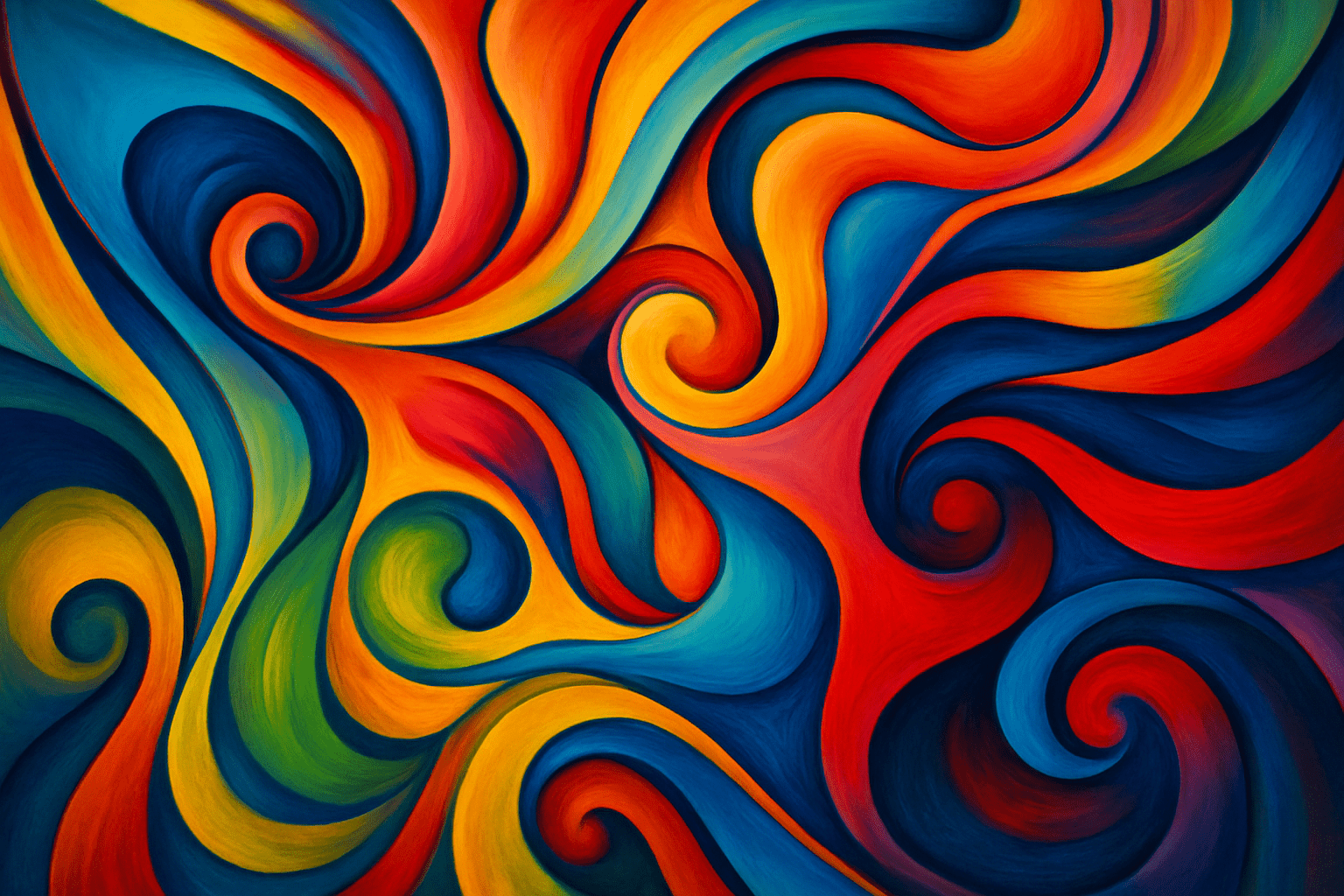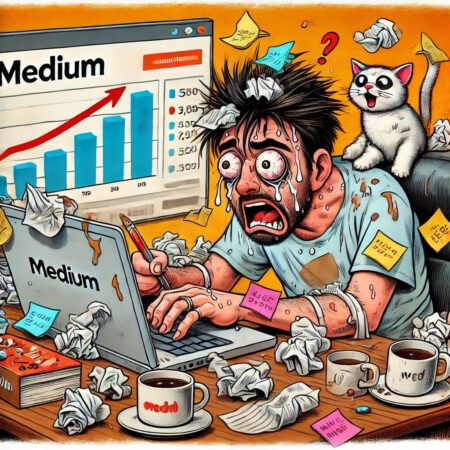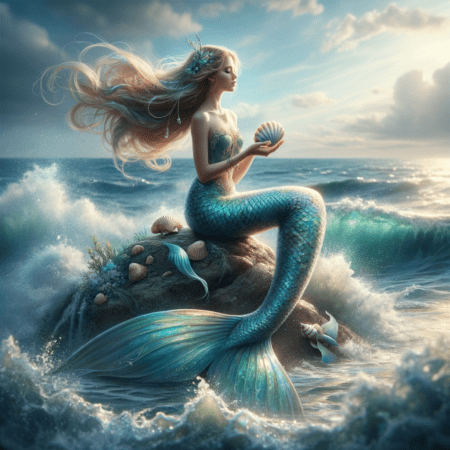
Tapestry
The art style of Tapestry is colorful and intricate, with a focus on patterns and texture. The overall effect is eye-catching and detailed, with a richness that can be appreciated up close.
AOI thinking about Tapestry [+_~]-/
Overview and Quickfacts
Tapestry is a form of textile art, traditionally woven by hand on a loom. Tapestries have been used for centuries as wall hangings and floor coverings, and are now produced in a wide variety of techniques, styles and materials. Tapestry is often associated with rich and luxurious fabrics, but can be made from a wide range of materials, including wool, cotton, linen, silk, and even synthetic fibers. The most common tapestry weave is the plain weave, in which the warp and weft threads are interlaced in a simple over-under pattern. Tapestries can be created in a wide variety of styles, from the highly detailed and realistic to the abstract and geometric. Traditional tapestries often feature complex patterns and images, while modern tapestries may be more minimalist in design. Tapestry is a versatile and durable art form that can be used to add color, texture and interest to any space. Whether youÃÂÃÂre looking for a traditional or contemporary tapestry, thereÃÂÃÂs sure to be a style that suits your taste.
Can understand it also, as:
Rug, Carpet, Mat
Categorize it as:
Impressionism, Modernism
.: Dreaming :.
holds a HAIKU for the art style
:. Thought is power .:
Detailed Description
Tapestry is a form of textile art, traditionally woven on a loom. It is composed of two sets of interlaced threads, the warp and the weft, which are perpendicular to each other. The weft is woven in and out of the warp to create a fabric. Tapestries are often heavy and can be used as wall hangings or furniture coverings. Tapestry is believed to have originated in the Middle East during the Bronze Age. It spread to Europe during the Renaissance, where it was used to decorate the homes of the wealthy. In the 18th century, tapestries were often used as upholstery for furniture. Today, tapestries are still made by hand, but they are also produced by machine. Some famous tapestries include the Bayeux Tapestry, which depicts the Norman Conquest of England, and the Gobelins Tapestry, which depicts the life of Louis XIV. Tapestries can also be found in the form of rugs and carpets.
.. beep, beep, beep ..
<START OF TRANSMISSION>
1. Tapestry is a form of textile art, traditionally woven on a loom. 2. Tapestries have been used since ancient times, and often depict historical or religious scenes. 3. The word "tapestry" comes from the Old French word tapisserie, meaning "carpet" or "covering". 4. Tapestries are usually made of wool, linen, or silk. 5. The most famous tapestry is the Bayeux Tapestry, which depicts the Norman Conquest of England. 6. Tapestries were often used to decorate castles and homes of the nobility. 7. Tapestries could also be used as a form of insulation, as they were often quite heavy. 8. In the Middle Ages, tapestries were often used as a form of currency. 9. Tapestries were also used as wall hangings to absorb sound. 10. In the 14th century, tapestries became more elaborate, with designs featuring animals, plants, and mythological scenes. 11. By the 15th century, tapestries were being made in workshops called ateliers. 12. The most famous atelier was the Gobelins workshop in Paris, which was founded in 1662. 13. The Gobelins workshop produced some of the most famous tapestries, including The Triumph of Alexander and The Apotheosis of Hercules. 14. In the 17th century, tapestries fell out of fashion, but experienced a revival in the 19th century. 15. William Morris was a leading figure in the Arts and Crafts Movement, and was responsible for popularising tapestries in the Victorian era. 16. Morris's company, Morris & Co., produced a number of famous tapestries, including The Hunt of the Unicorn and The May Morning Dew. 17. Tapestries experienced another decline in popularity in the 20th century, but have since been experiencing a resurgence. 18. Tapestries are now often used as wall hangings, curtains, or upholstery. 19. Tapestries can also be used to make handbags, purses, and other accessories. 20. Tapestries are also used in a form of needlepoint known as petit point.
<EOF>
.. robbel bob
Visual Examples from our image gallery
Coming soon, we are so slow .. might never come
Artists, Paintings, and more
(be aware, can be highly speculative)
Artists (be aware, speculation possible):
1. William Morris (1834-1896) 2. Edward Burne-Jones (1833-1898) 3. John Ruskin (1819-1900) 4. Dante Gabriel Rossetti (1828-1882) 5. Christina Rossetti (1830-1894) 6. Ford Madox Brown (1821-1893) 7. Phillip Webb (1831-1915) 8. Charles Edward Perugini (1839-1918) 9. Kate Greenaway (1846-1901) 10. Walter Crane (1845-1915) 11. Aubrey Beardsley (1872-1898) 12. Charles Ricketts (1866-1931) 13. Charles Shannon (1863-1937) 14. William Nicholson (1872-1949) 15. Eric Gill (1882-1940) 16. Dora Carrington (1893-1932) 17. Paul Nash (1889-1946) 18. Edward Wadsworth (1889-1949) 19. John Piper (1903-1992) 20. Graham Sutherland (1903-1980) 21. Keith Vaughan (1912-1977) 22. John Minton (1917-1957) 23. Robert MacBryde (1913-1966) 24. Edward Bawden (1903-1989) 25. John Craxton (1922-2009) 26. Michael Ayrton (1921-1975) 27. Peter Lanyon (1918-1964) 28. Roger Fry (1866-1934) 29. Duncan Grant (1885-1978) 30. Vanessa Bell (1879-1961)
Artworks (be aware, speculation possible)
1. The Bayeux Tapestry (c. 1066) 2. The Hunt of the Unicorn Tapestries (c. 1495-1505) 3. The Lady and the Unicorn Tapestries (c. 1485-1490) 4. The Raphael Tapestry (c. 1515-1519) 5. The Sistine Chapel Tapestries (c. 1512-1515) 6. The Stirling Heads Tapestry (c. 1540-1542) 7. The Gobelins Tapestry (c. 1662-1688) 8. The Beauvais Tapestry (c. 1664-1667) 9. The Mortlake Tapestry (c. 1619-1625) 10. The Arras Tapestry (c. 1460-1475) 11. The Burrell Tapestry (c. 1470-1480) 12. The Devonshire Hunting Tapestry (c. 1526-1528) 13. The Ghent Altarpiece Tapestry (c. 1515) 14. The Hunt of the White Hart Tapestry (c. 1366-1367) 15. The Lille Tapestry (c. 1540-1550) 16. The Merton Tapestry (c. 1260-1280) 17. The Oudenaarde Tapestry (c. 1700-1725) 18. The Pisa Tapestry (c. 1340-1350) 19. The Saint-Chamond Tapestry (c. 1550-1560) 20. The Saintes Tapestry (c. 1290-1300) 21. The Verdun Tapestry (c. 1370-1380) 22. The Winchester Tapestry (c. 1360-1370) 23. The Amiens Tapestry (c. 1270-1280) 24. The Angers Tapestry (c. 1373-1380) 25. The Arundel Tapestry (c. 1390-1400) 26. The Conches Tapestry (c. 1125-1135) 27. The Coronation Tapestry (c. 1300) 28. The Harrow Tapestry (c. 1310-1320) 29. The La TÃÂène Tapestry (c. 150-50 BC) 30. The Unicorn Tapestry (c. 1495-1505)
Epoch
The art style Tapestry emerged in the late 20th century.
AI ART RESSOURCES (AKA, well Tools)
Helping tools -> predefined search links on other pages:











